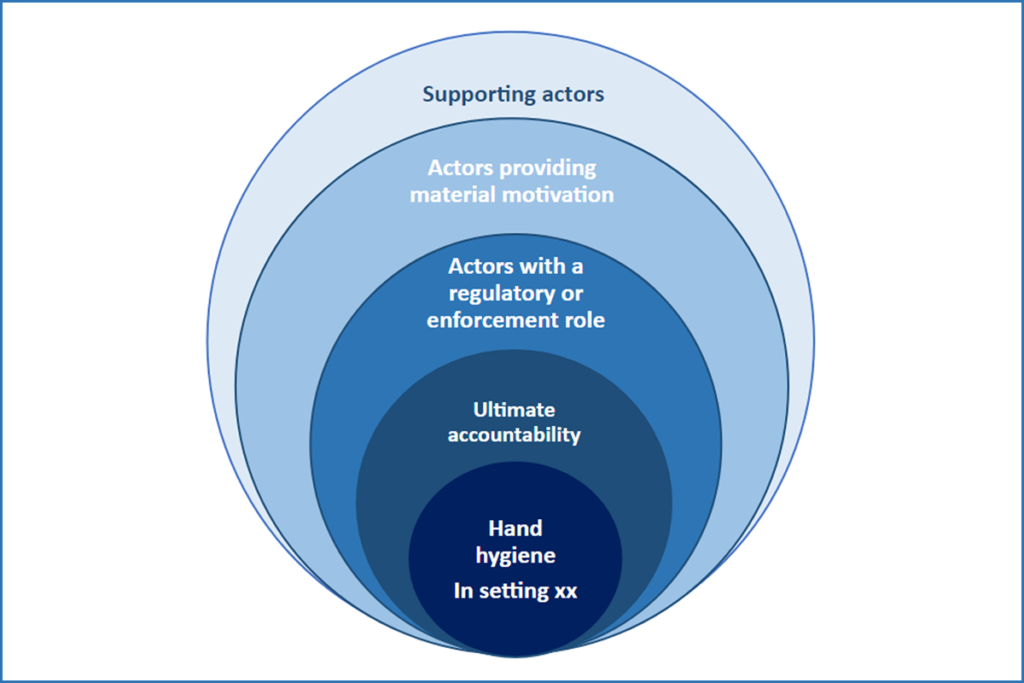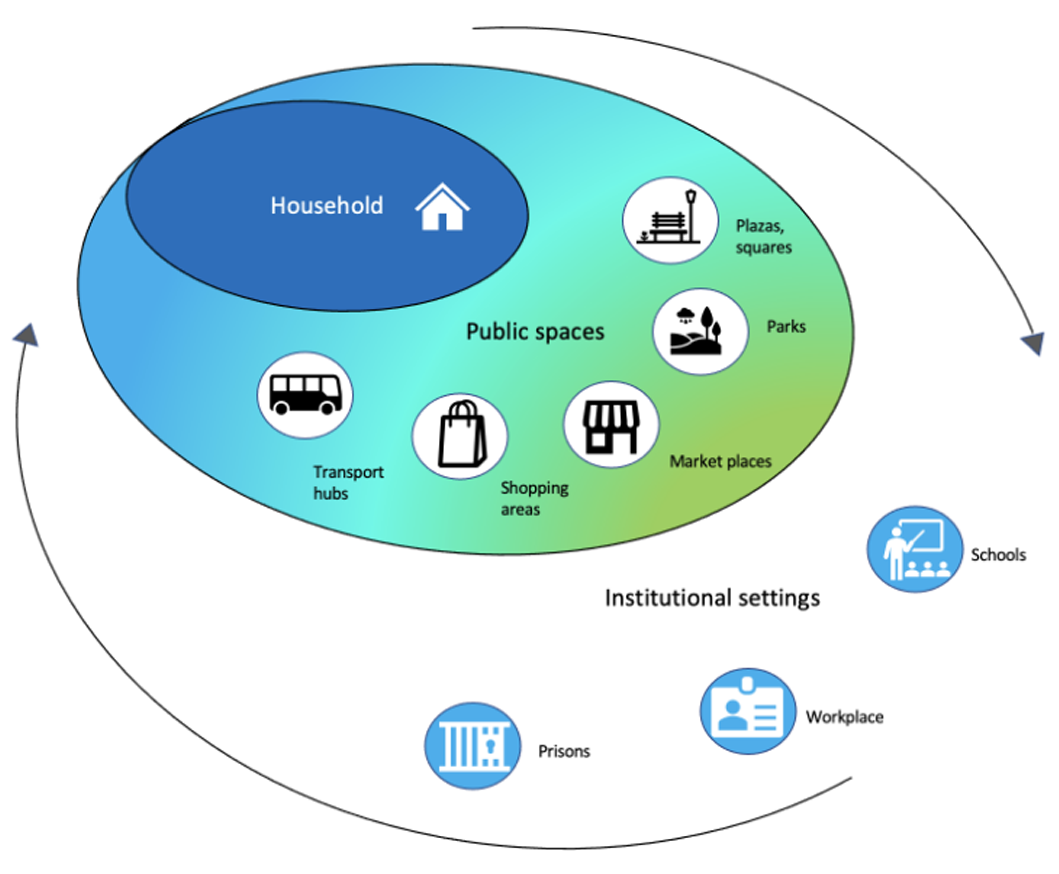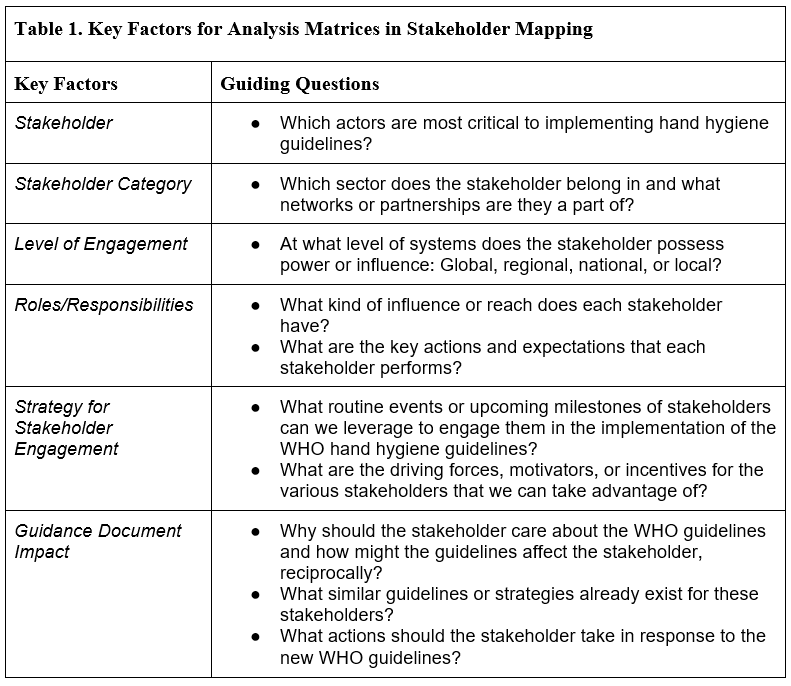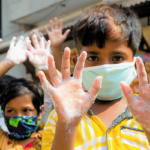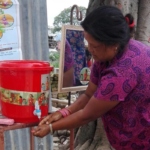The 2022 Think Tank is closely aligned with the upcoming evidence-based WHO/UNICEF global guidelines on hand hygiene in community settings. It has three main goals:
- Identify the key stakeholders and systems that drive or influence hand hygiene in specific contexts at different levels of influence (i.e., local, regional, national, global).
- Examine how each stakeholder may use and influence the upcoming hand hygiene guidelines that are relevant to them.
- Determine the mechanisms that drive cooperation and collaboration between the hand hygiene sector and other external networks that can enable more effective integration and acceptance of hand hygiene guidelines.
In this post, we describe how the Think Tank leveraged a global stakeholder mapping exercise to collect and analyze information to support the development of a broader implementation framework for upcoming global guidelines on hand hygiene in community settings.
What are global guidelines and why are they important?
Global guidelines lay out evidence-based recommendations to direct end-users to make informed decisions on specific actions and public health measures with the aim of achieving the best possible health outcomes. For example, in the hand hygiene space, there are existing guidelines for hand hygiene in health care settings developed by the WHO. These guidelines lay out an evidence-based, multi-modal strategy to address hand hygiene in healthcare institutions, targeting especially healthcare workers, hospital administrators, and health authorities.
To operationalize global guidelines effectively, it is necessary to consider an implementation strategy throughout the development process. This strategy helps lay out mechanisms and other strategies for users to apply these global-level guidelines in their specific contexts.
How does the Hand Hygiene Think Tank contribute to operationalizing the upcoming WHO/UNICEF guidelines?
Participants self-selected themselves into a context-specific small group – households, schools, workplaces, public spaces, or religious institutions – based on their expertise and experience. Each group filled out a matrix using the guiding questions above (Table 1) and reported their high-level findings back in plenary. These reports were used to identify common themes or interesting insights to consider when determining engagement strategies. For example, the schools group noted that integrating culture and religion into school curricula can help enhance hand hygiene practices in certain countries. Interestingly, this insight also links to the role of religious institutions in the hand hygiene space, and this overlap should be noted when thinking through guidelines implementation.
Overall, the Think Tank provides a unique platform to bring various experts together and work through a specific hand hygiene question. The rapid stakeholder mapping process developed and utilized during the Think Tank provides a strong starting point that can be built on during more detailed stakeholder consultations. Likewise, while the aim of the Think Tank was to conduct a “broad stroke,” global stakeholder mapping exercise, this rapid process could be utilized in a local system where needed. Nevertheless, mapping the system is a critical piece to ensuring effective operationalization of these upcoming guidelines.
What comes next?
It is important to note that the Think Tank is only the first step to developing the WHO/UNICEF guidelines implementation strategy. Following the Think Tank, context-specific stakeholder workshops will be held to engage with the list of stakeholders identified in each matrix. During these workshops, stakeholders will provide additional thinking, focusing on the role of organizational accountability by using the framework in Figure 2.
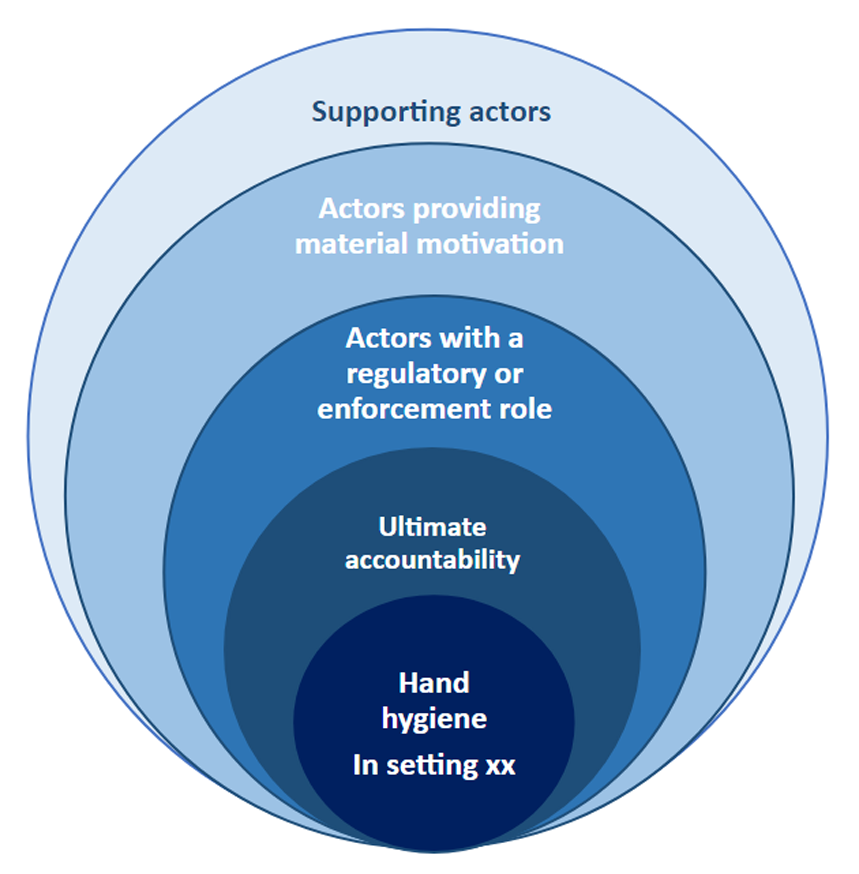
Figure 2: WHO/UNICEF Guideline Implementation Framework for the stakeholder mapping for hand hygiene
Ultimately, the Think Tank reiterates the importance of utilizing a systems approach to turn commitments to universal hand hygiene into action and maximize the impact of these actions. While mapping the system is only one component to a systems approach, defining stakeholders, networks, and their roles can inform engagement strategies that will ultimately lead to more effective global guidelines implementation.

